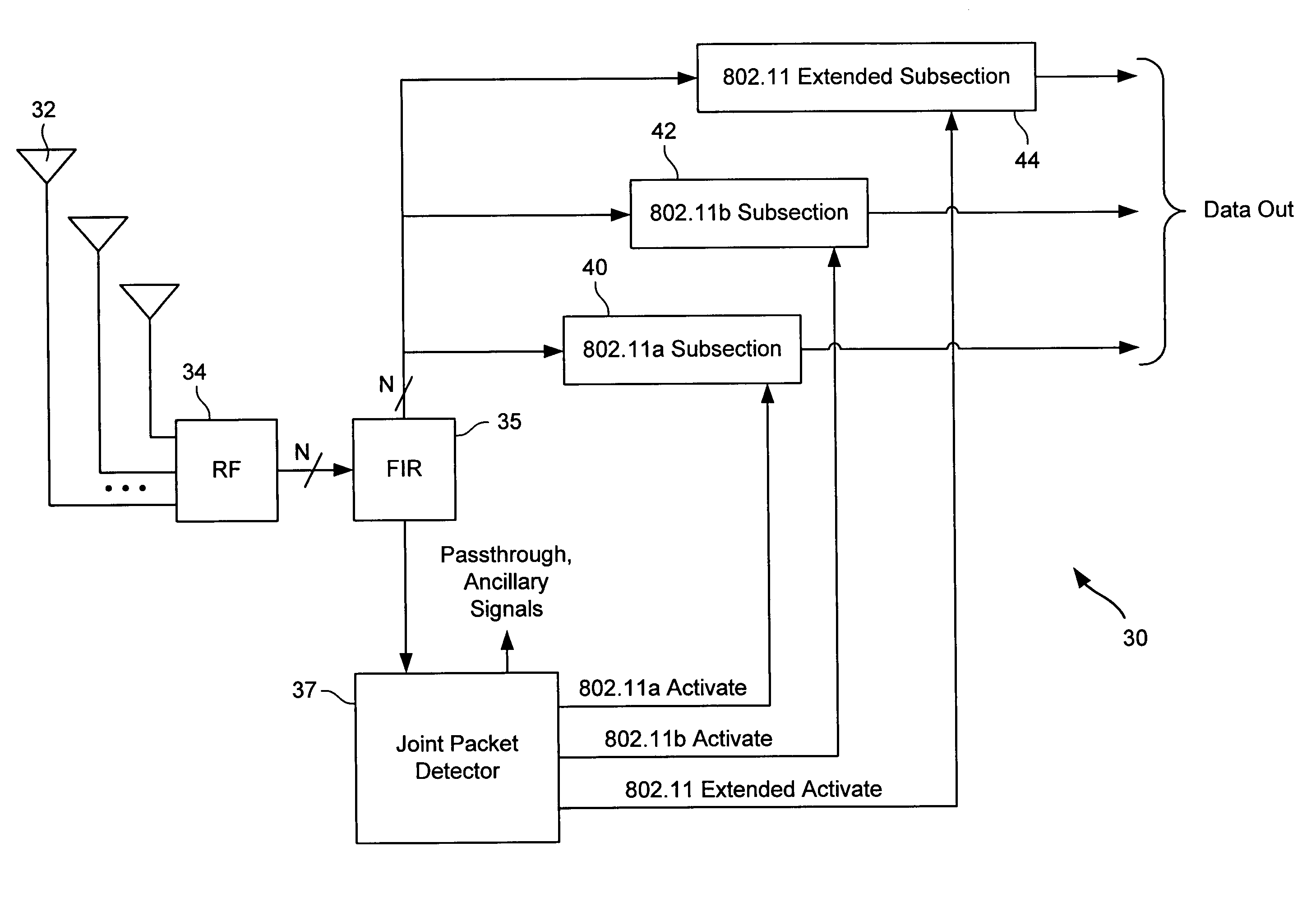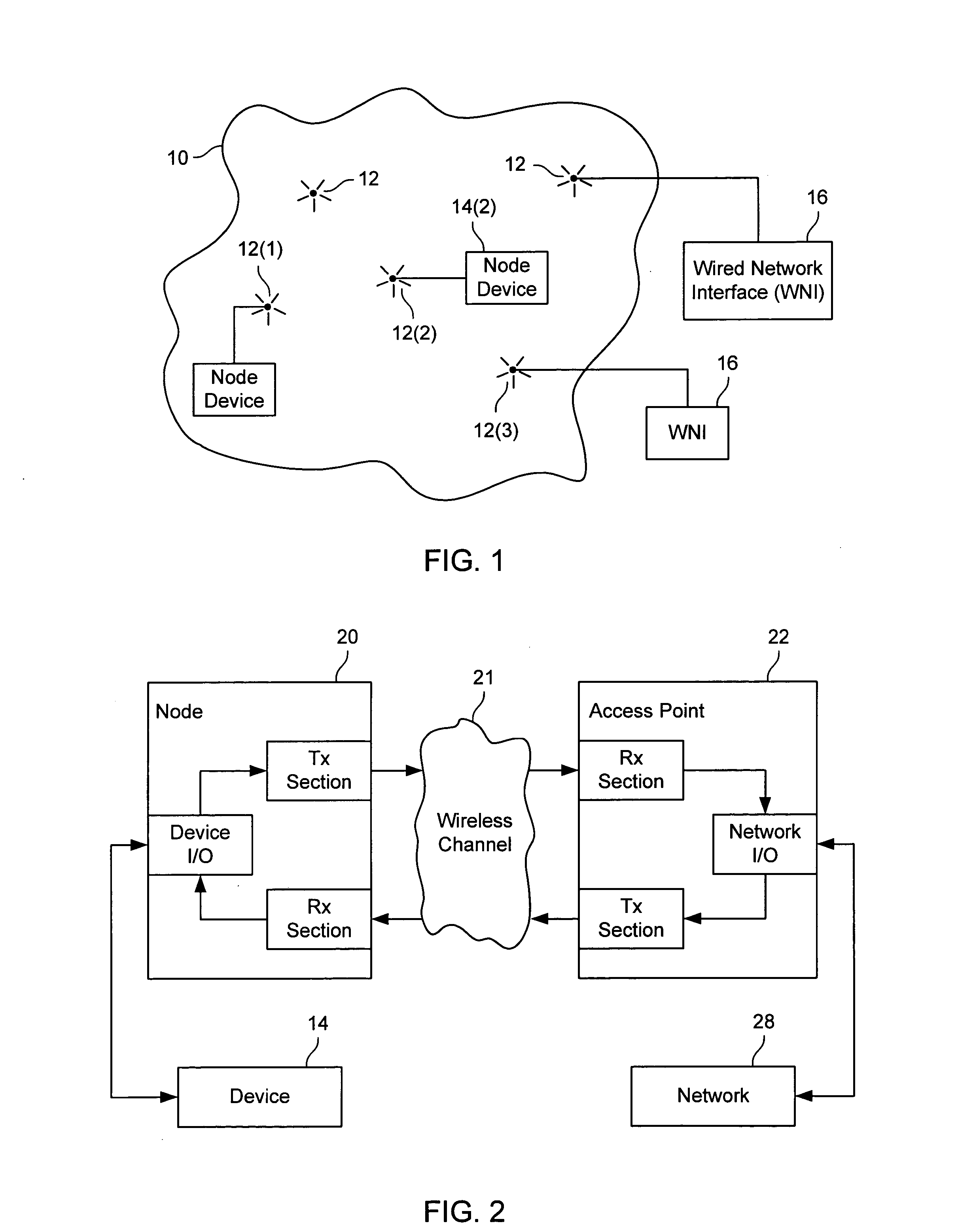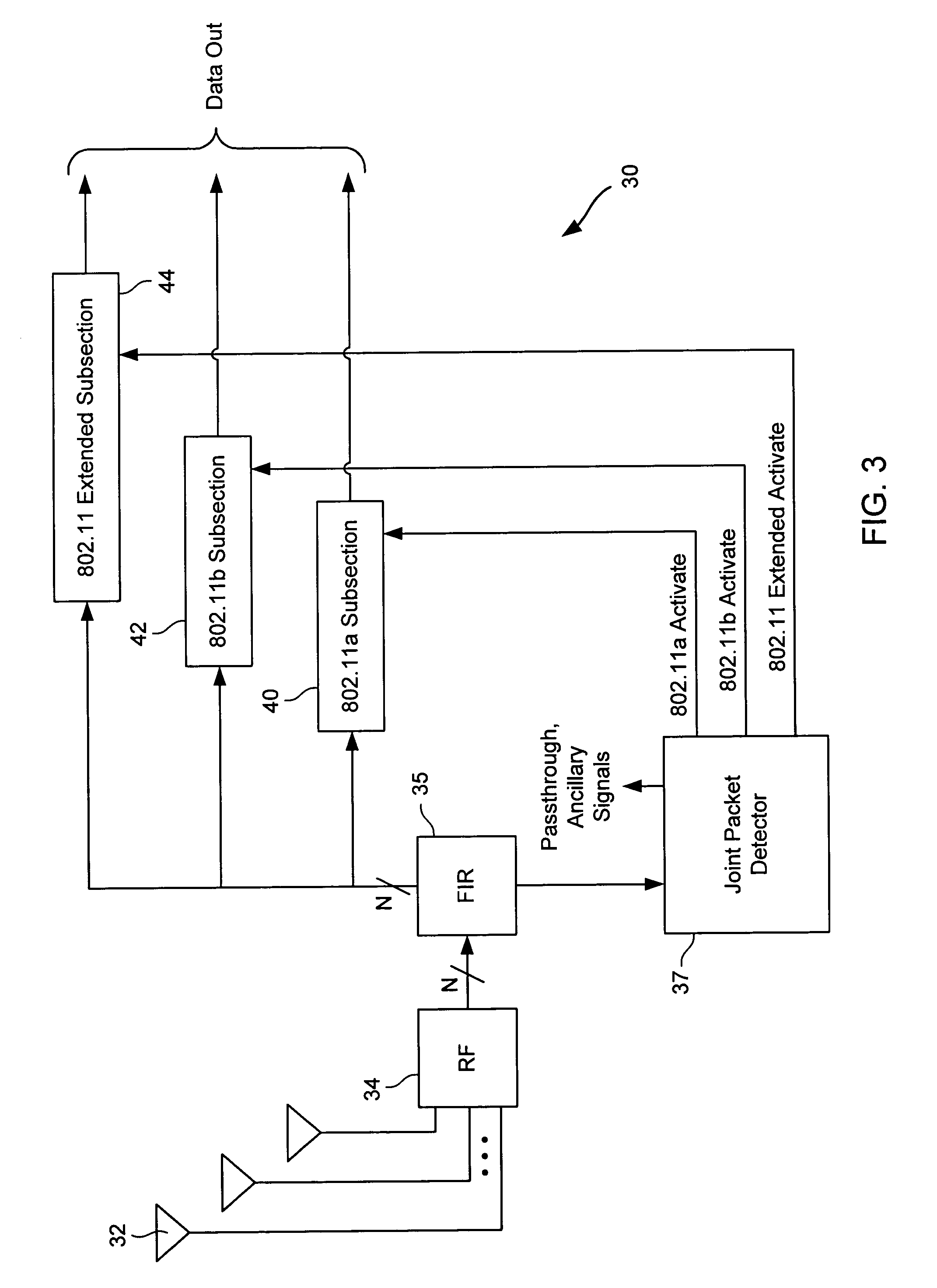Joint packet detection in wireless communication system with one or more receiver
a wireless communication system and receiver technology, applied in the direction of transmission monitoring, wireless commuication services, electrical equipment, etc., can solve the problems that the receiver that must receive and process both 802.11a and 802.11b signals cannot use a simple common sampling scheme, and many conventional packet detection schemes are unsuitabl
- Summary
- Abstract
- Description
- Claims
- Application Information
AI Technical Summary
Problems solved by technology
Method used
Image
Examples
Embodiment Construction
[0021]FIG. 1 illustrates a simple wireless network that might use the present invention. As shown in FIG. 1, a wireless network 10 comprises a plurality of nodes 12 wherein each node 12 is capable of communicating with at least one other node 12 of wireless network 10. In specific implementations, wireless network 10 is a local area wireless network, as might be used within a building, campus, vehicle or similar environments.
[0022] In a specific embodiment, wireless network 10 is designed to be compliant with one or more of the IEEE 802.11 standards. However, it should be understood that other standards and nonstandard networks might be substituted therefore to solve problems similar to those solved in the 802.11 environment. For example, the IEEE 802.11g standard contemplates different signals than the 802.11a or 802.11b standards and the 802.11 set of standards might be further modified for later developments. Thus, while many of the examples described herein solve the problem of...
PUM
 Login to View More
Login to View More Abstract
Description
Claims
Application Information
 Login to View More
Login to View More - R&D
- Intellectual Property
- Life Sciences
- Materials
- Tech Scout
- Unparalleled Data Quality
- Higher Quality Content
- 60% Fewer Hallucinations
Browse by: Latest US Patents, China's latest patents, Technical Efficacy Thesaurus, Application Domain, Technology Topic, Popular Technical Reports.
© 2025 PatSnap. All rights reserved.Legal|Privacy policy|Modern Slavery Act Transparency Statement|Sitemap|About US| Contact US: help@patsnap.com



